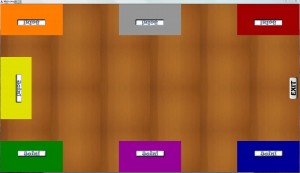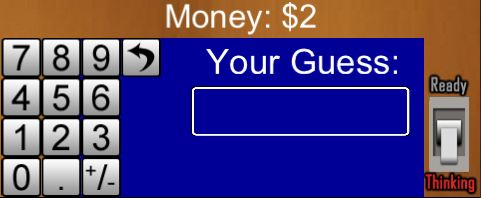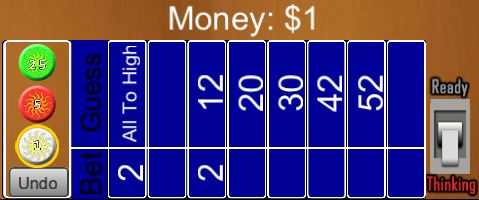I have completed the base game of Wits and Wagers. This conversion went fairly smoothly, at least compared to Yacht. I am getting used to the torque scripting language, though there is still a lot to learn.
The login screen is similar to the screen for the Concentration Sweep game that William created. I have added the player colors to the login spots so that you can tell what color you will be during the game. We are planning to have a common login system that will also you to pick a color and enter your name for a high score table.
The game is played in seven rounds. In each round you read a question from the boxed game. Once the question has been read, each player’s region displays a panel to enter their answer:
The player uses the touchscreen to type in their guess and then clicks the ready button. The ready button is a toggle, so if you change your mind before the timer runs out, or everyone else is done, you can flip the toggle and change your guess. In order to make sorting the guesses, I decided to stick with purely numeric guesses. This means that everyone has to use the same units. Most of the time there is no ambiguity about what units to use, but if there are, everyone has to use the same units.
Once all the guesses have been entered, the central area shows the guesses on the payout regions and the player area changes to a betting area. Each player gets a small copy of the central area where they can place their bets. It would have been possible to have everyone drag their bet out to the central area, but with a lot of players there could be finger collisions. We also would like to have the option to make all the bets private.
On this panel, the player selects one of the three chip sizes and then clicks on the guess/bet regions to place a bet. A bet can be moved from one column to another by dragging and also dragged off the area to clear the bet.
While the players are betting, the central area is showing the player’s guesses and the payouts and is being updated with their bets as they are made:



